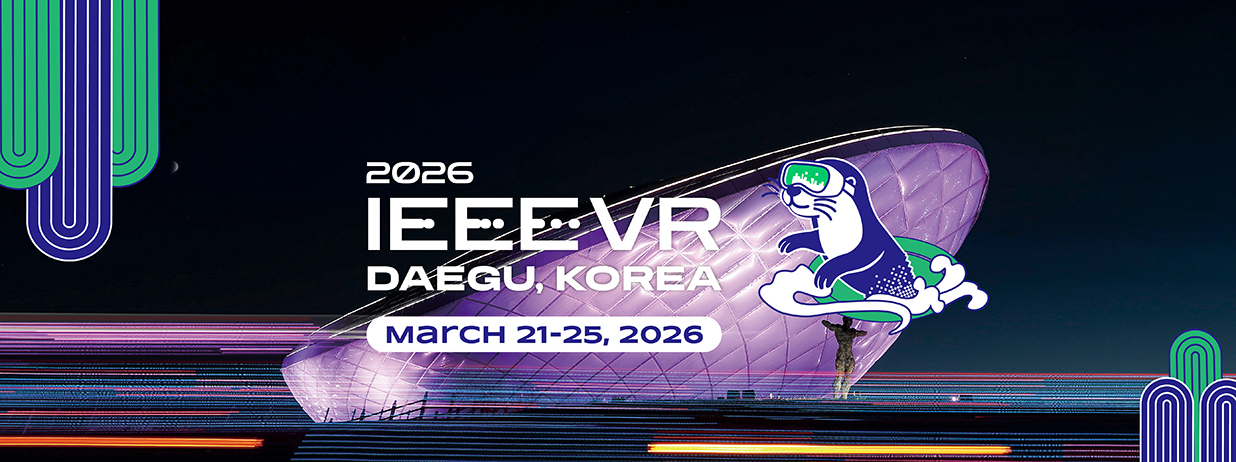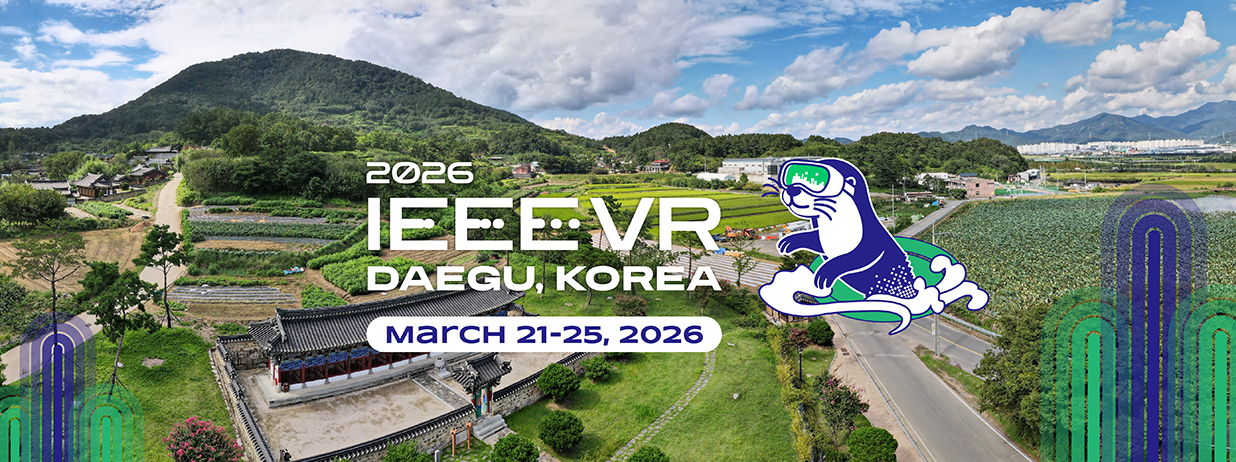Call for 3DUI Contest Entries
Submissions can be made through the online system:
https://new.precisionconference.com/vr.
Important Dates - All deadlines are Anywhere on Earth (AoE)
- January 13, 2026: Submission of two-page abstract and video
- January 20, 2026: Notification of which entries are accepted
- January 27, 2026: Camera-ready version
Overview
This year, the IEEE VR 2026 conference will host the 17th annual 3DUI Contest. It is open to anyone interested in 3D User Interfaces (3DUIs) and Virtual Reality, from researchers to students, enthusiasts, and professionals. The purpose of the contest is to stimulate innovative and creative solutions to challenging 3DUI problems. The topic of this year is “Beyond Slides: The Next Generation of Presentations Using Extended Reality”. In recent years, we've seen a significant shift from traditional in-person presentations and lectures to online meetings. While current online presentation methods often rely on 2D slides (like Microsoft PowerPoint) or simple video playback, the immersive nature of XR environments means we no longer need to adhere to these conventional approaches for remote interaction. Leveraging XR for virtual presentations can foster more efficient interactions between presenters and attendees. Furthermore, it allows us to move beyond solely visual aids, maximizing presentation effectiveness through multisensory experiences that engage vision, sound, and touch.
This year, the 3DUI contest challenges participants to break free from the limitations of traditional 2D slides. We are asking you to innovate and devise more efficient and immersive presentation methods within the realm of Extended Reality.
We expect the following functionalities:
- The authors may develop a multi-user environment that caters to both presenter and attendee perspectives. Alternatively, they could focus on a single-user scenario from the presenter's viewpoint and devise novel presenting methods.
- We encourage moving beyond solely visual information to incorporate multisensory effects, leveraging a combination of two or more stimuli from visual, auditory, and haptic information. It's not necessary to utilize all sensory inputs.
- The project should showcase novel 3DUI techniques with a focus on technical contribution, rather than merely solving the complexity of the presentation itself. For instance, the factual accuracy of the presentation content isn't a requirement.
Submissions will be evaluated through the following criteria:
- Usability & user well-being of user interactions
- Novelty of the 3DUI design
- Technical quality of the proposed implementations
- Enjoyment and engagement (fun)
Selected contestants will be required to provide a software demonstration of their solutions at the conference.
Eligibility
The 3DUI Contest is open to anyone interested in 3DUIs -- researchers, students, hobbyists, professionals, or anyone else. Requirements for the selection and presentation are specified below.
Rules
The submitted solutions should fulfill the following rules to be considered for acceptance and presentation during IEEE VR 2026:
- Submissions should present a 3DUI solution, which …:
- … covers the topics of “Beyond Slides: The Next Generation of Presentations Using Extended Reality”,
- … describes what 3DUI techniques have been designed and/or extended,
- … is documented with a video (between 3 and 5 minutes) as well as a standalone executable, and
- … can be demonstrated live at the IEEE VR 2026 conference.
- The developed 3DUI should …
- … be innovative and technically sound,
- … provide high usability,
- … be aesthetically pleasing, and
- … be enjoyable and thought-provoking.
Teams
Teams of up to ten people may submit solutions.
Paper
Teams must submit a short paper of two pages, including a description of the solution, details about the software developed, a brief description of the closest related work and how the system is novel, and a description of how they iterated upon the design. If the submission is accepted, this paper will be included in the IEEE VR Conference proceedings as a two-page extended abstract describing the contest solution. Therefore, it must be formatted using the IEEE Computer Society format as specified for VR conference papers.
Video
Teams will also submit a video that presents the solution to the public, including an explanation of the equipment, software, and interaction techniques used to solve the problem. If the submission is accepted, the video will be made publicly available. Videos should have a length between 3 and 5 minutes and should include the title along with the names and affiliations of the contestants. The submitted file should be a high-quality compressed video, submitted via a link to an unlisted video on an online platform like YouTube.
On-Site Demonstration
If the submission is accepted, authors will participate in a demo session at the conference, where they will showcase their work to the IEEE VR community. The winner of the contest will be determined at IEEE VR 2026, where a selection of expert judges from the community will try out and rate the presented 3DUIs. The final score will be the combination of the expert judges’ scores. The judging criteria are usability, novelty, technical quality, fun, and the relevance of the topic. Please note that at least one author of each accepted work should be registered for the conference and present on-site during the dedicated 3DUI sessions.
Abstract and Video Submission - due January 13, 2026
Teams should submit their abstract paper and a high-quality video through the online submission system: https://new.precisionconference.com/vr
Submissions must be in English and must be prepared in the IEEE Computer Society VGTC format (https://tc.computer.org/vgtc/publications/conference/) and submitted as PDF. We highly encourage authors to use the LaTeX template (https://www.cspaul.com/vgtc/vgtc_conference_latex.zip). Authors who choose to use the Word template need to ensure that their PDF submission matches the format.
Important Difference from the Previous Conferences
IEEE VR 2026 introduces some key distinctions compared to past conferences:
- Flexible Interaction Models: Given potentially unstable venue WiFi, multi-user interaction isn't required. Authors can develop systems for a single user, such as a presenter. This could involve allowing visitors to develop their own presentation materials using the proposed system (an authoring tool) or, alternatively, letting visitors experience a pre-made presentation in a virtual environment, much like a presentation attendee. If a multiuser solution is proposed, we encourage teams to bring their own networking infrastructure, such as a WiFi router, rather than relying on the conference’s internet.
- Cybersickness Considerations: All teams must address the potential issue of cybersickness when demonstrating their contest work. For instance, ensure that your system maintains a considerably high frame rate. Additionally, teams may include cybersickness results from preliminary studies in the submitted paper, if available.
- Mandatory Poster Preparation: All accepted authors are required to prepare a poster in the same format as the IEEE VR Poster track to explain their work. This poster should cover essential aspects such as the goal of the work, design methods, experimental results, and demonstration scenarios.
Contacts
Feel free to contact us if you have any further questions. Call updates will be posted on this webpage.
3DUI Contest Chairs:
(3dui@ieeevr.org)
- Chaeyong Park, Korea University, Korea
- Katerina Mania, Technical University of Crete, Greece
- Tim Weissker, RWTH Aachen University, Germany
- Regis Kopper, Iowa State University, USA











